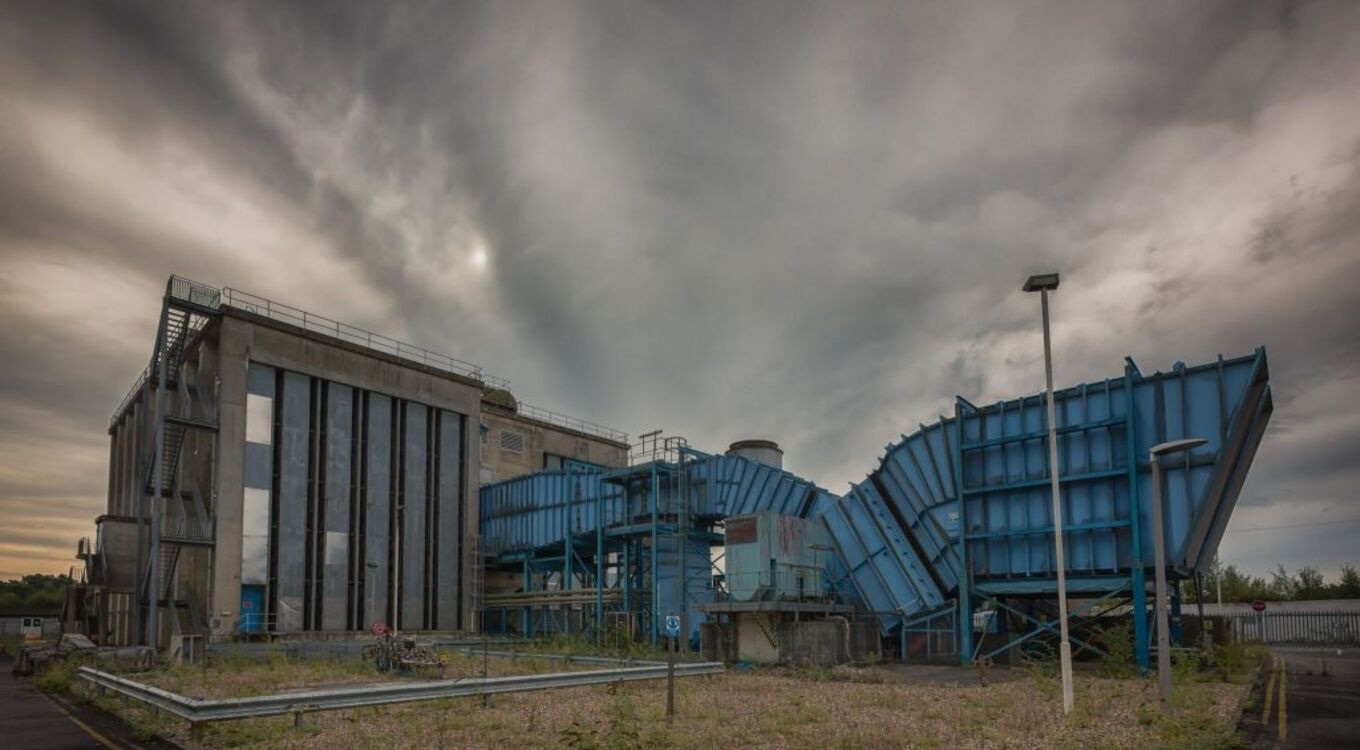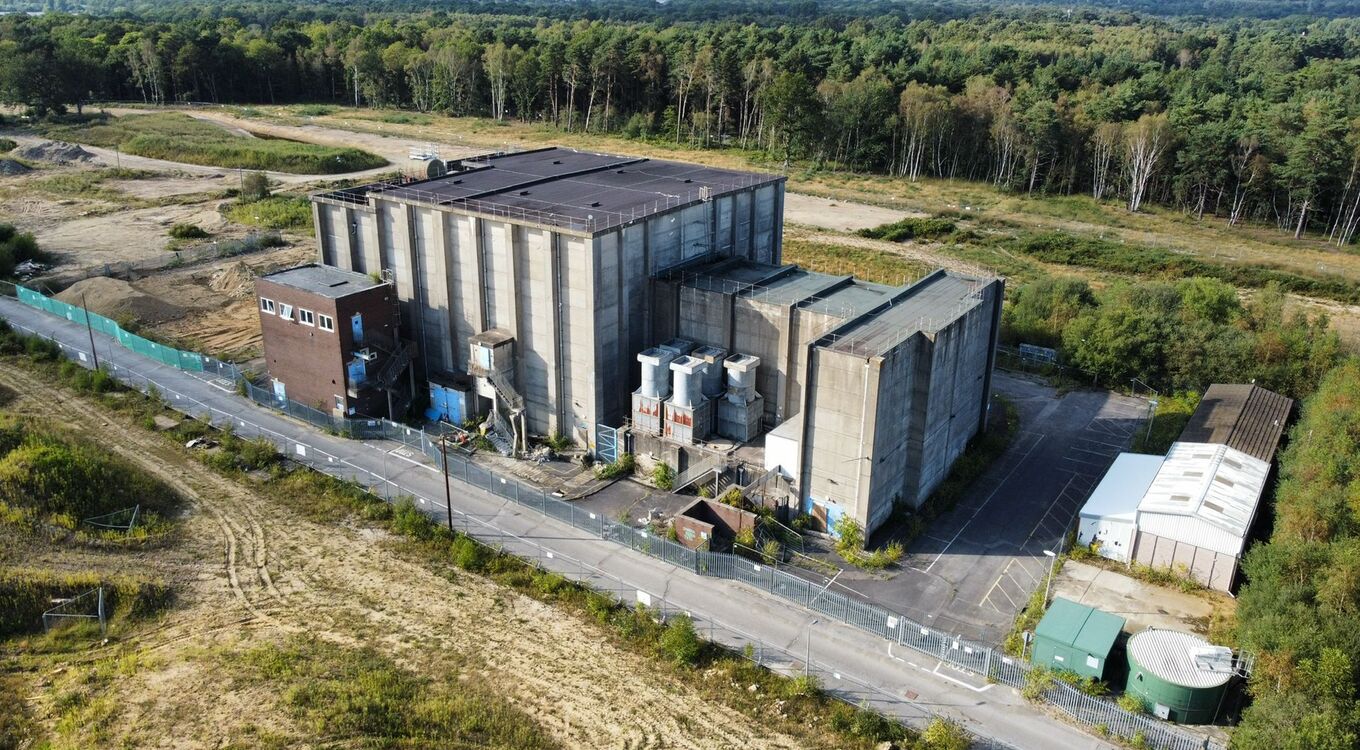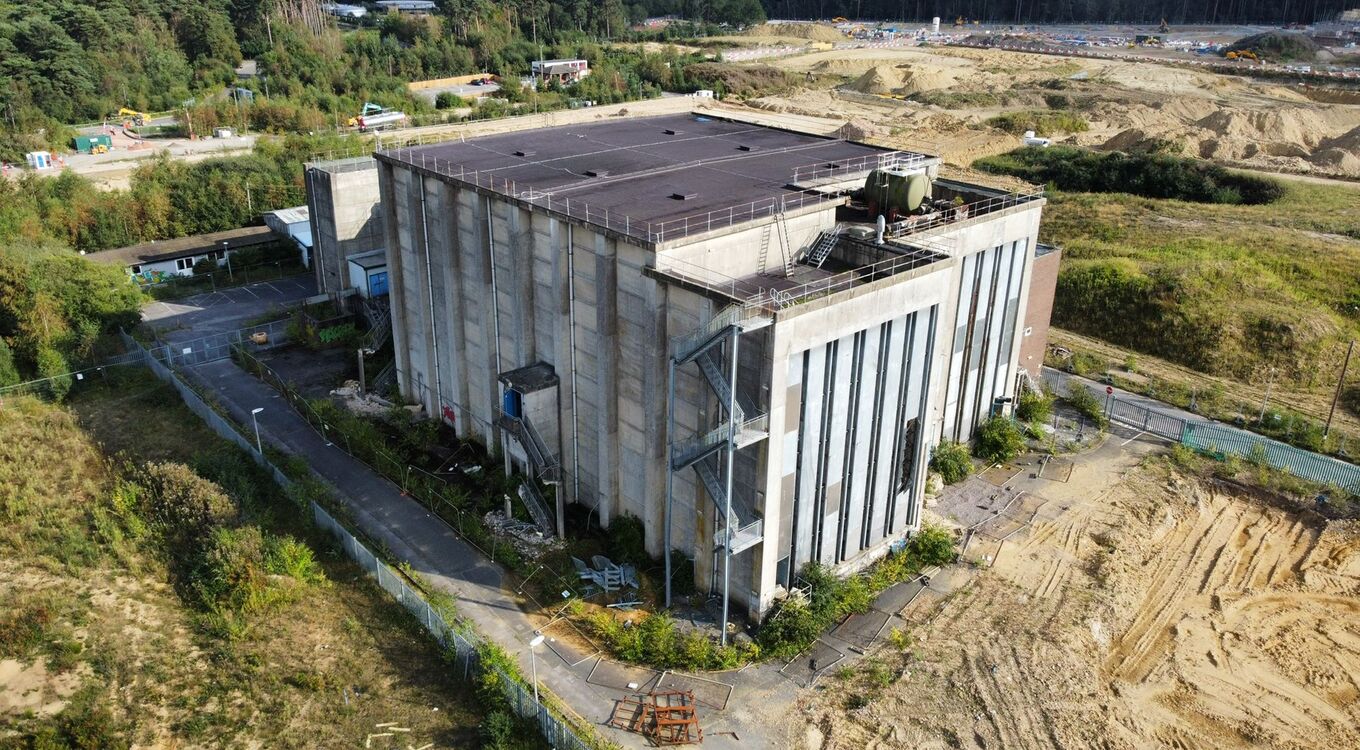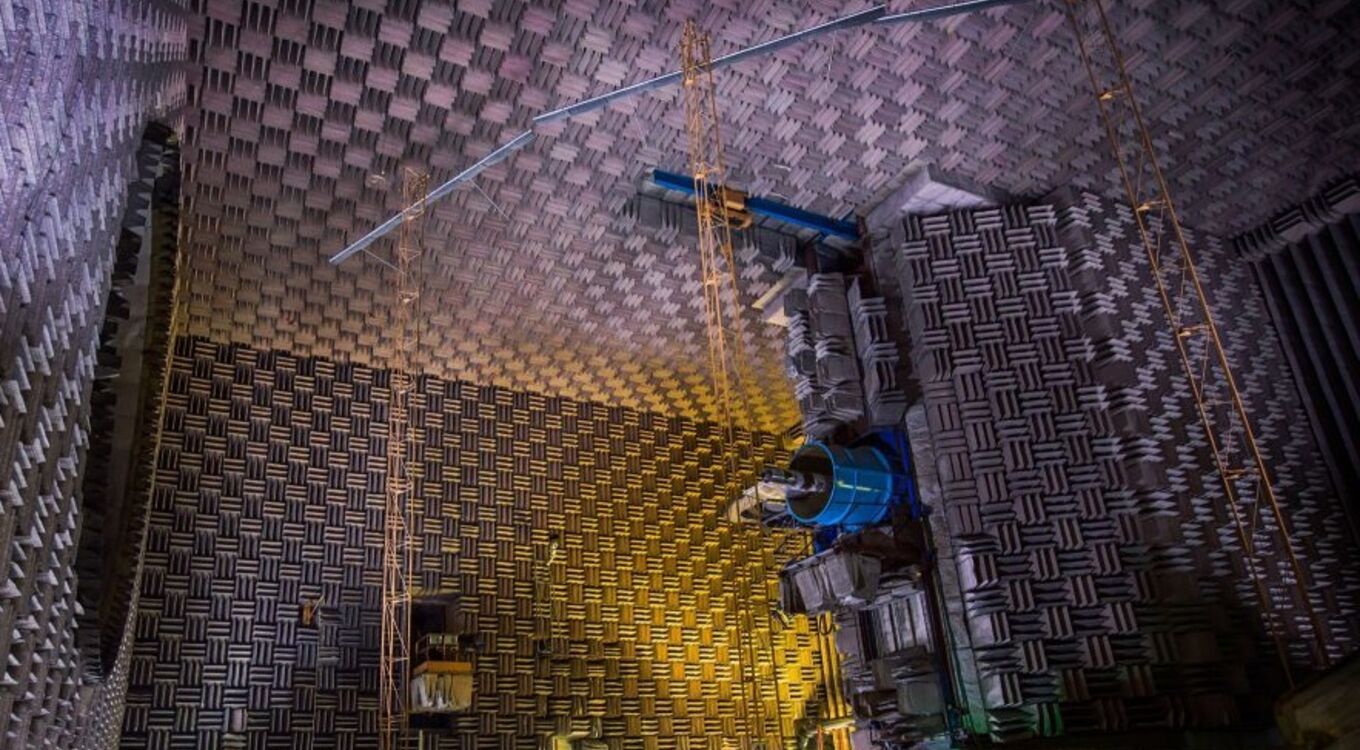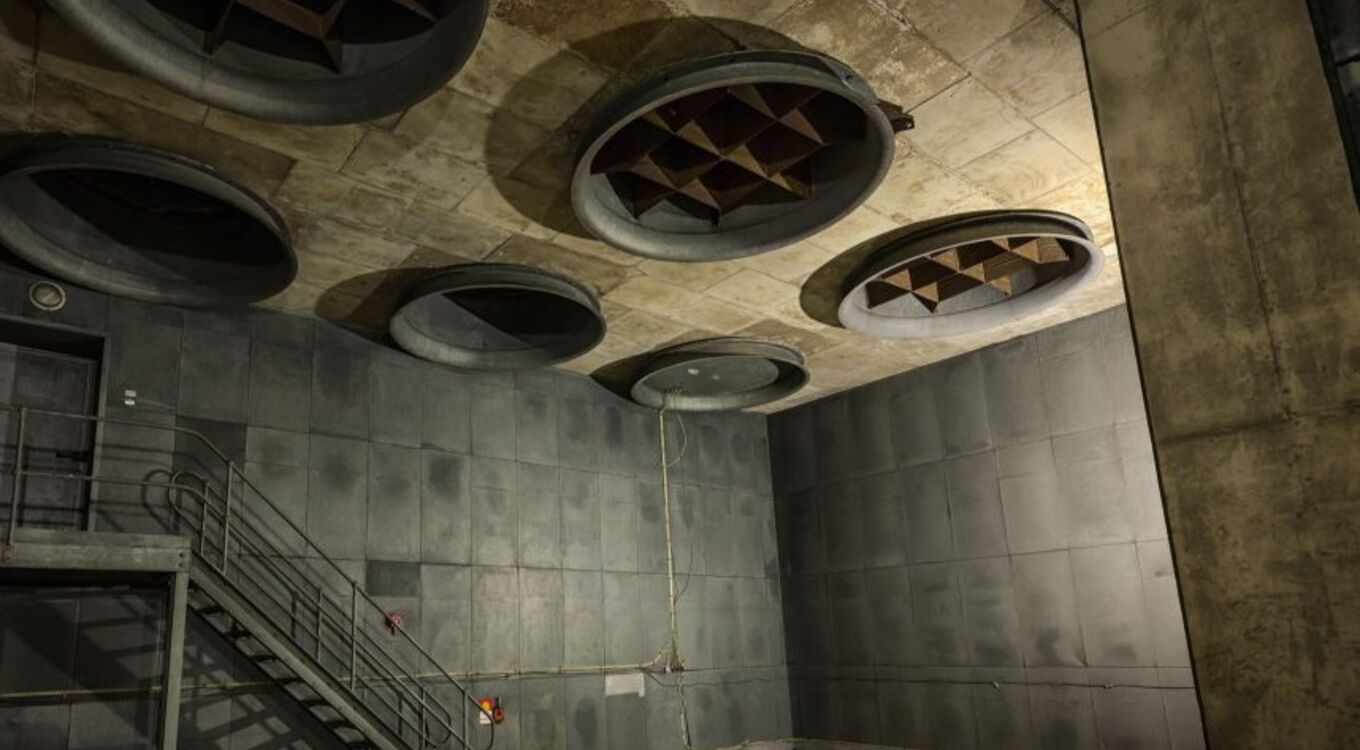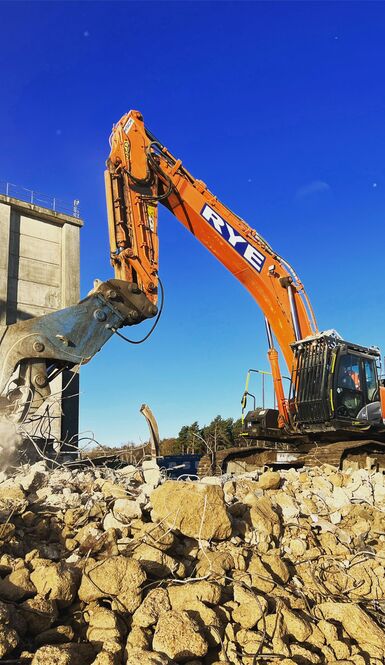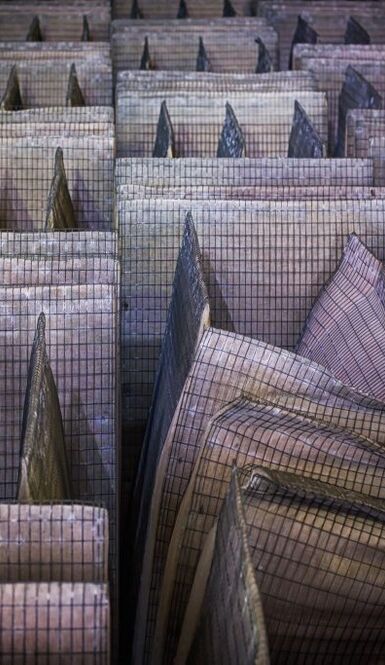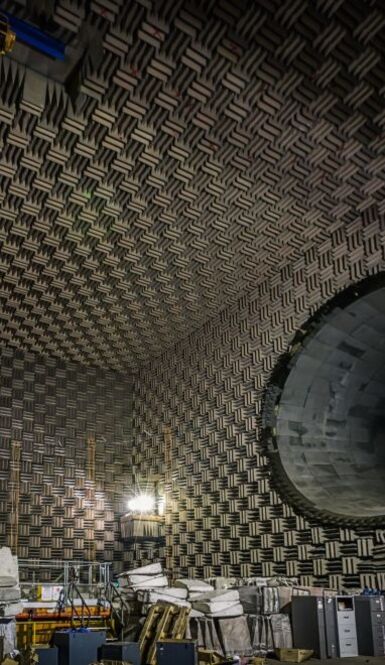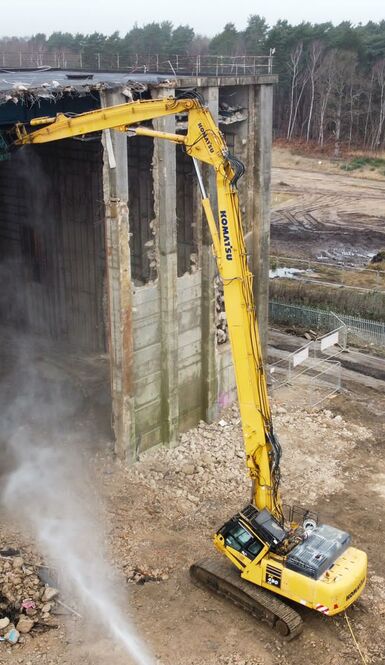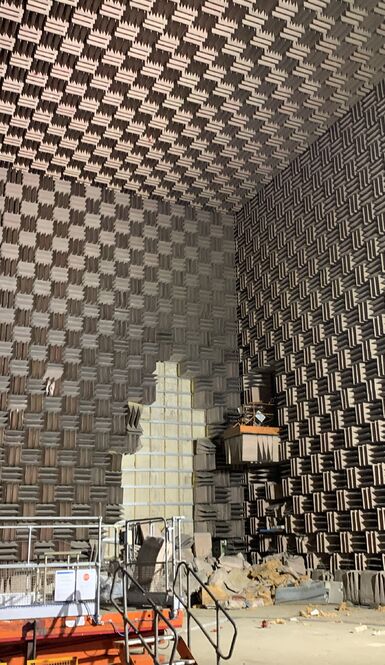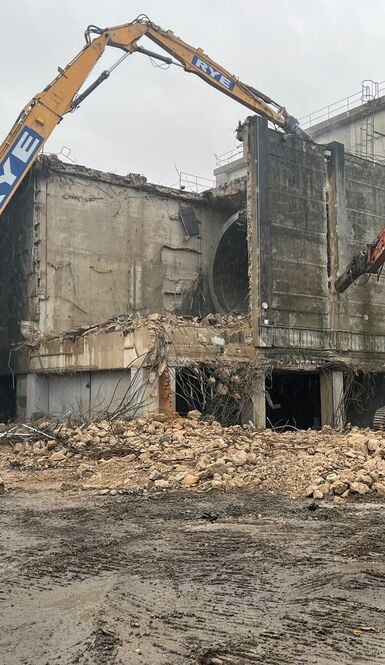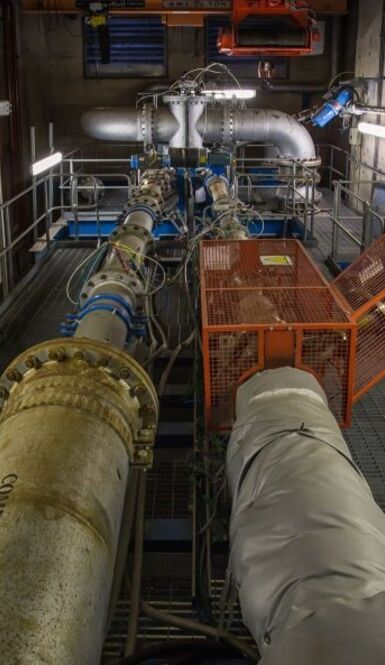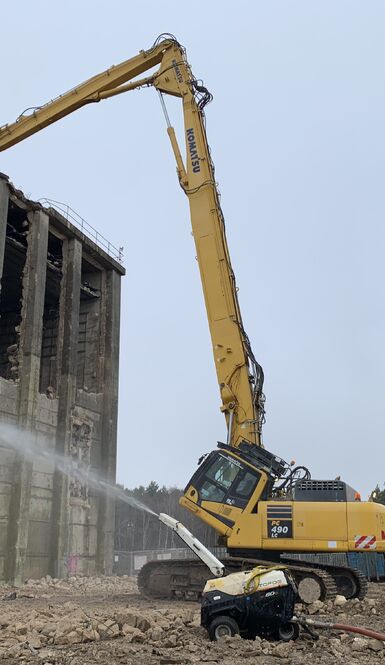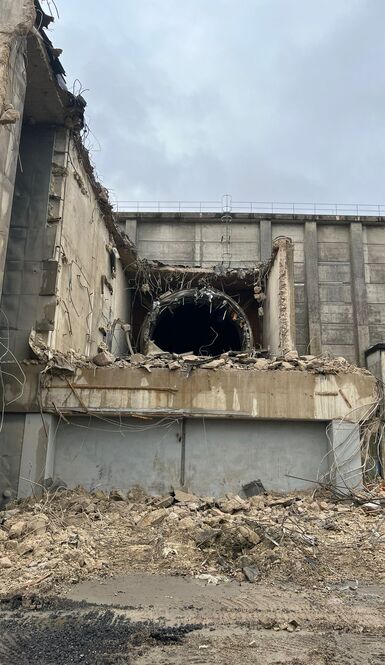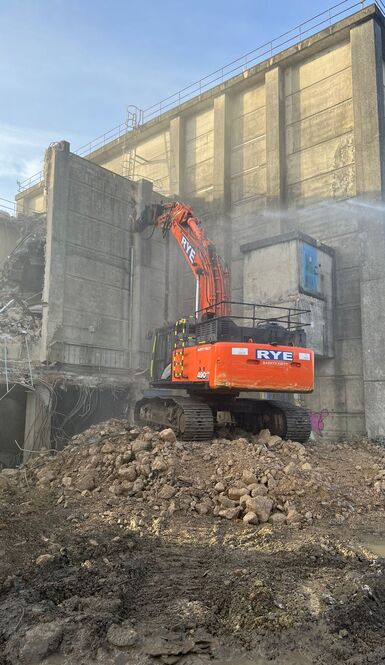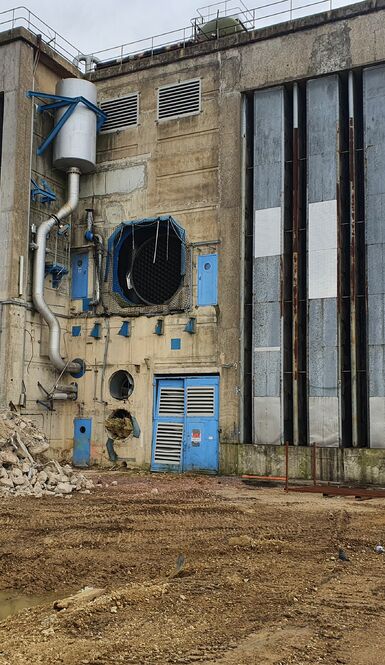- ClientSt. Edward (part of the Berkeley Homes Group)
- Date2021/2022
- RoleDemolition Consultant and CDM Advisor
- TeamStephen McCann, Mick Daynes, Yazan Osaily
We worked on the demolition of the National Gas Turbine Establishment (NGTE) Anechoic Facility in Farnborough as part of the Hartland Village development for the client St. Edward (part of the Berkeley Homes Group).
The Anechoic Facility had a 10,000m3 chamber for noise testing in which the enclosed working volume had nearly zero noise reflection, thereby reproducing environmental conditions comparable to those in flight and permitting work to separately identify the source and direction of noise wave phenomena.
The building was principally intended for the noise testing of jets and turbines. For over fifty years, the facility was at the forefront of gas turbine development being arguably the largest site of its kind in the world with such prestigious engines such as the V-Bomber, Harrier and Tornado being tested on-site; even Concorde’s engines were able to be tested there up to 2,000 mph. Every gas turbine installed on Royal Navy ships was examined there, and even captured Soviet engines were discreetly examined at this facility during the Cold War era.
The low noise reflection characteristics of the main Anechoic Chamber were achieved by lining the walls with nearly 7,000 sound-absorbing wedges manufactured from bonded glass fibre covering the walls, ceiling, and floor.
The structure was a large heavily reinforced concrete frame with a Durasteel asbestos (asbestos steel) roof and steel and brick-clad ancillary structures.
The method of demolition was all to be undertaken by heavy plant which included the removal of the wedges, and the progressive fragmentation of the concrete frame.
We proposed that the removal of the Durasteel by hand, accessed by a full-boarded internal scaffold, introduced more problems than it solved and as such created unnecessary risk transfer.
A small section of the Durasteel roof was removed as proof of concept. This was backed up by having perimeter monitoring work location and personal monitoring in place, and the results confirmed that our proposed control measures were correct and the remote removal method could proceed.
The remote removal of the Durasteel using plant was selected as it conformed with the principles of Clause 14.1 of BS:6187:2011, which states “ whenever practically possible, a remote mechanical process should be used to minimise the risk to the workforce during the removal process.” It also followed Regulation-7 (3) of the Control of Asbestos Regulations 2012.
We were appointed as the demolition consultants for the project. We first had to check the content of the Pre-Construction Information (PCI) documents supplied by the construction phase Principal Designer and Client. We developed the document to be more demolition specific and handed it to the demolition contractor to use in the creation of the Construction Phase Plan (CPP).
Once the contractor’s CPP was completed, we reviewed the plan and the Risk Assessment and Method Statement (RAMS) for the project and assisted with the demolition design and control measures to create a safer and more efficient programme.
Throughout the works, we carried out monthly audits, which were planned to coincide with the specific phases of the project, which included specific audits for CDM compliance, asbestos works, and process-specific demolition audits.
- Produce the Pre-Construction Information.
- Produce the Designer Key Hazards.
- Carry out a Pre-Demolition BREEAM survey.
- Consult on the tender list.
- Attend the bid meetings and provide feedback on the submissions.
- Review and comment on the Construction Phase Plan.
- Review and comment on the Risk Assessments and Method Statement and issue a report.
- Give input on the revised demolition method and exclusion zone.
- Review and comment on the asbestos Plan of Works and issue a report.
- Carry out the pre-start site audit and issue a report.
- Carry out monthly site audits and issue a report on the progress.
- Carry out the completion site audit and issue a report.
- Ensure the completion of the Health & Safety File.
Need some health and safety advice?
Book a free no-obligation consultation with one of our Health & Safety consultants today


 Pricing Plans
Pricing Plans

